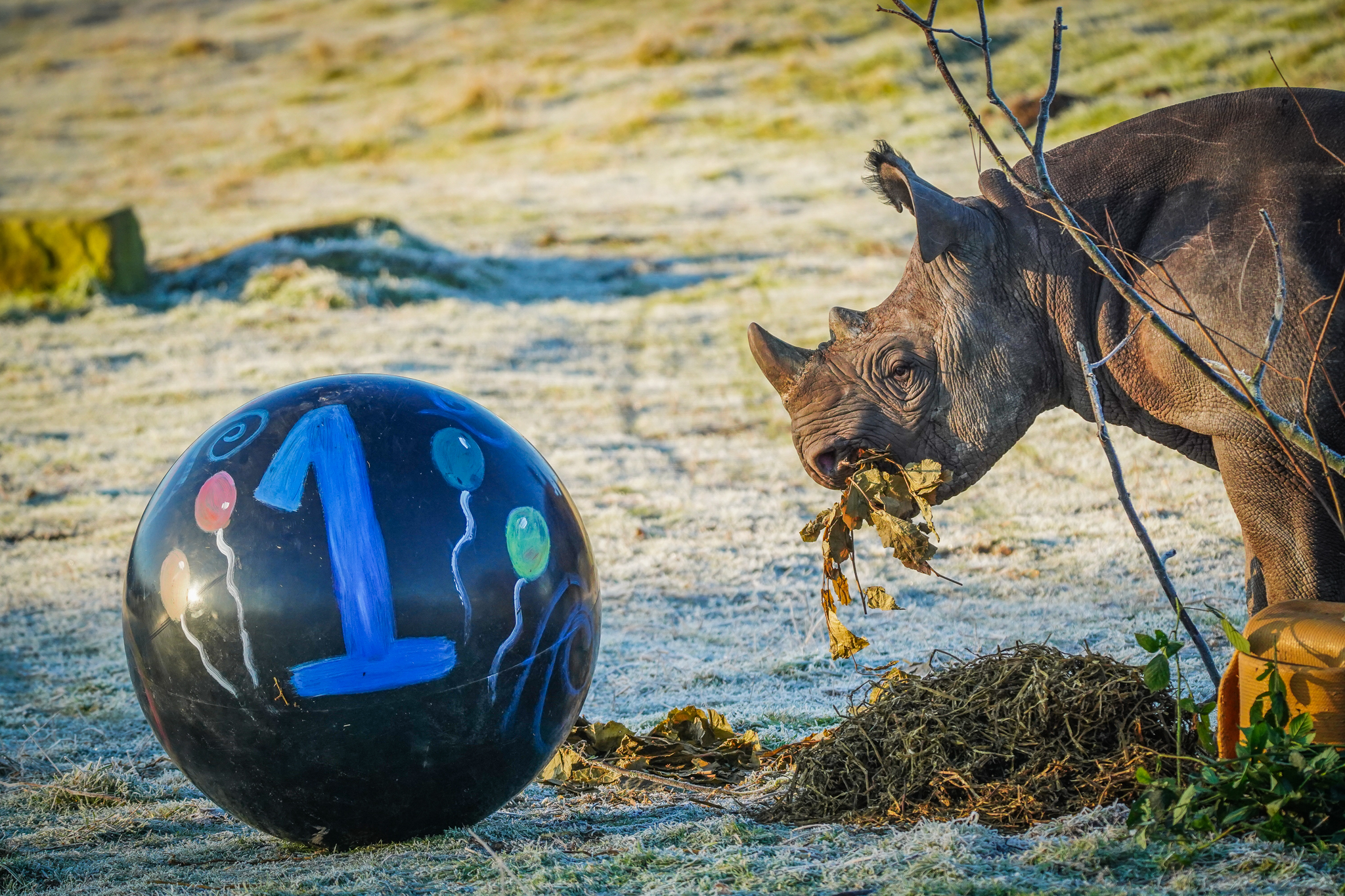Today is Word Rhino Day! Here at WildLife Foundation we support Black Rhinos, the smaller of the two African rhino species. This monumental mammal has long been under threat due to human activity: from being relentlessly hunted during the 19th century, followed by continued poaching pressure during the late 20th century with a high demand for Rhino Horn in Asia and the Middle east, especially for alternative medicine . Poachers remain the biggest threat to the Black Rhino, but with protection and effective biological management, Black Rhino numbers are slowly recovering and currently there are approximately between 5,040 and 5,458 animals (according to figures published by IUCN in 2016).
WildLife Foundation are proud supporters of Save the Rhino, a charity committed to conserving Rhino species across the world.
To celebrate the day, we are sharing some exciting footage from the Save the Rhino’s Ol Jogi Wildlife Conservancy which shows the results of one a WildLife Foundation-funded project. Ol Jogi was established in 1980 and is one of the oldest conservancies in the Laikipia region in Kenya, a stronghold for the Eastern black rhino subspecies. The programme has proven to be one of the most successful rhino breeding programmes in Kenya, and has contributed many rhinos to the overall national population by helping to restock areas where numbers were dwindling.
These clips are taken from a CCTV remote camera system at Ol Jogi’s wildlife corridors, the first and second phase of installation of which was funded by WildLife Foundation. The camera system is now up and running, and footage is being received by the conservancy’s Central Operations Room.
The footage we received shows rhinos using the wildlife corridors, which are created to connect habitats together, providing a route between areas that may otherwise be separated due to human activities (such as roads and villages) so that animals can safely travel through them.
The system can also be used to alert against any illegal trespassing to prevent poaching incidents, keeping rhinos at Ol Jogi safe.
Seeing healthy, happy rhinos such as these in the wild reinforces why we do what we do at WildLife Foundation – and we couldn’t do it without you, our supporters, so thank you! Your generous donations go towards funding projects such as these, which provide practical additions to places like as Ol Jogi which allow our partners to protect wildlife that desperately needs our help.
10 Black Rhino Facts
- There is actually no colour difference between the white and black rhino. They are both of a dark grey colour, but this can vary depending on local soil conditions (as rhinos tend to wallow in the mud or dust, their skin may vary in colour accordingly).
- Black rhino are browsers (i.e., they eat trees, bushes and shrubs), compared to their cousins, white rhinos, which are grazers. When they bite off woody plant parts they often leave a clean-angled (pruning-shear type) edge (elephant tend to shred the ends of branches like a toothbrush), achieved by the shape of their hooked lip.
- Red and yellow-billed ox-peckers are often seen with rhino and benefit them by removing ticks and clearing parasites from any open wounds, and also by raising the alarm if there is any danger approaching.
- Black rhino can move extremely fast and have been recorded at highs of 55 km/h. They can change direction surprisingly quickly and can run right through scrub and bushes.
- Like white rhinos, black rhinos have poor eyesight, and cannot easily detect an observer standing more than 30 metres away. They do however have an excellent sense of smell and hearing
- Black rhinos can be either solitary and territorial, or semi-social and less aggressively-territorial, depending on the habitat. Incredible footage from the recent BBC Africa series recorded a group of black rhinos congregating socially at a waterhole, thus disproving myths that black rhinos are strictly solitary.
- Black Rhinos only have hair on the ears, tail tips and eyelashes.
- The Black Rhino was once the most numerous rhino species, with several hundred thousand animals. After European settlement they were relentlessly hunted, meaning that by 1970 there were an estimated 65,000 animals left.
- Between 1970 and 1992, the black rhino suffered a 96% reduction in numbers due to poaching for medicine in Asia and the Middle East with total numbers dipping as low as around 2,400.
- Thanks to dedicated conservation efforts, one black rhino subspecies has now been reclassified to a lower category of threat – from Vulnerable to Near Threatened – meaning that it is less likely to become extinct in the wild in the near future











